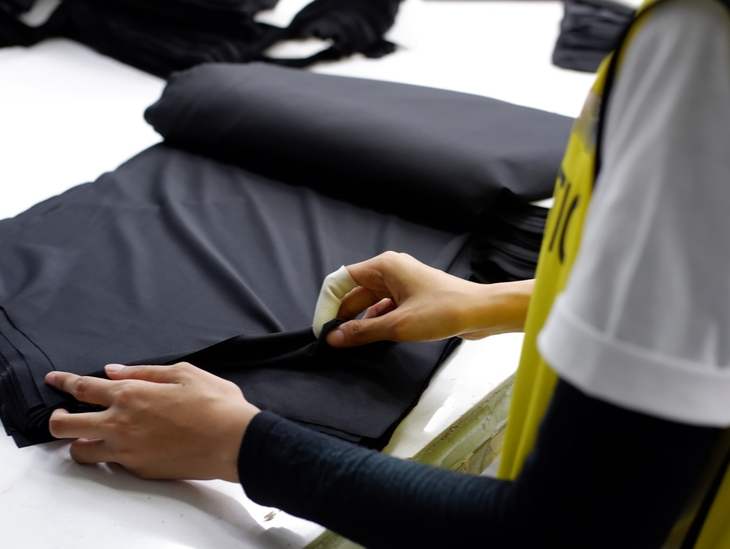The specificity of the implementation process has made the garment industry one of the industries that are difficult to manage. Each product has many details made at different stages. If the business does not have appropriate manufacturing management, unnecessary problems are likely to arise. Let's see what Navigos Search has to say about the ultimate garment manufacturing management process nowadays.
1. What is garment manufacturing management?
Garment manufacturing management is a crucial factor in the manufacturing and business activities of enterprises. This work is associated with garment factories, planning, reporting, and monitoring the progress of garment manufacturing processes to ensure timely supply of quantities and provide top-notch product quality.
There are many complicated stages in the garment industry. As a result, businesses often face difficulties in balancing management between manufacturing and distribution activities. Therefore, enterprises must have an effective manufacturing management process to solve this problem.

Garment manufacturing management is strikingly significant in manufacturing and business activities
2. Modern garment industry manufacturing management process
2.1. Manufacturing capacity assessment
Manufacturing capacity is the ability to supply goods and products to the maximum capacity of machines, equipment, and parts in an enterprise in a certain time and conditions.
Manufacturing capacity assessment is a crucial first step in orienting business activities, helping managers understand market demand for garment products. From there, they will get the big picture and assess the ability to meet market demand of the business based on the analysis of the following factors:
-
People (workforce): based on the quantity and quality of workers.
-
Facilities: machines, lines, means of labor, and technology for manufacturing.
-
Management and manufacturing organization: help improve business efficiency and create synchronization in the enterprise.
2.2. Determination of raw material need
As a significant activity in manufacturing management, determining raw material needs will be based on the data of market analysis and assessment of the manufacturing capacity of the enterprise. The next is calculating the number of materials needed to implement manufacturing according to the plan. Through this, the manager will be able to answer the following questions:
-
What materials are needed to produce the garment according to the plan?
-
What is the quantity?
-
When is the provision time
-
When is the delivery time?
With the need for numerous materials, the complex implementation process, and the ever-changing needs of users, garment manufacturing management will face difficulties without a detailed material specification.

Determining raw material needs is a vital step
2.3. Manufacturing stage management
Drafting in garment
Drafting is the activity of creating a technical drawing applied in the garment. From that drawing, the worker cuts and sews the details into the finished product. The completed original drawing then will be duplicated into many other copies with different colors. There are two popular draftings:
-
Drafting by hand: Use specialized manual tools such as scissors, rulers, pens, and cardboards to sketch the original pattern based on standard formulas. The sewing department will be responsible for the next stage.
-
Drafting by computer: Using specialized software like Optitex or Gerber. This method requires employees to be proficient in the software.
No matter which way is applied, it is still difficult for businesses to avoid errors in the size-taking process or mistakes of designs that don't meet customers' requirements. Therefore, the manager must divide the group specializing in different styles of clothing appropriately and closely supervise to ensure that the drafting is precise as specified by the customer.
Cutting and creating the product
It's the stage of creating the drafting designed into standard cutting patterns. Errors often arise during this stage, including wrong cut or wrong size compared to the drafting. To prevent that, managers must recruit employees with appropriate skills, closely monitor the cutting operation to remove defective items, and ensure that products kept are of standard ones.
Sewing into the finished product
After creating the standard fabrics at the above stage, workers use the necessary machinery and equipment to sew into the finished product. The steps include:
-
Overlock sewing
-
Double chain stitch
-
Single chain stitch
At this stage, mistakes such as open seams, missing stitches, incorrect sewing techniques, incorrect design, poor quality, color errors, and size errors can affect the business's reputation. Therefore, as a manager, you must ensure that the staff performs on schedule with the quantity and quality as planned.

Finished products need to meet quality and quantity standards
Doing the ironing products
By using quality equipment, workers can do ironing quickly. After being ironed, products should be kept with their original color and fabric quality intact. This step is necessary to make the product look nicely and smooth before reaching the customers and users.
Checking the finished product quality
This is a critical step to ensure that the product meets the standards before being launched onto the market. Unsatisfactory products will continue to be removed. Therefore, managers must monitor closely, check regularly and unexpectedly to ensure that workers perform well in each stage.
2.4. Product quality management
This is the final step in garment manufacturing management. The quality of garment products plays a vital role in building the brand face and competitiveness of enterprises in the market. Thus, management and inspection must be strictly implemented throughout the manufacturing process. From there, make a specific report on the quantity and classification characteristics of each product according to the initial criteria set.
3. Tips for effective manufacturing management in the garment industry
Order management
How should managers determine the numbers of orders and product requirements? How is the price?
Taking in the order details provides you with a big picture of the required material resources, including the number of meters of fabric, the type of fabric, the color of the fabric, the white or the colored thread, and the quantity. Make a detailed and accurate plan to calculate the cost for each type of product. As a result, your business can solve the profit and loss problem on each order.

Order management helps to accurately determine the quantity of raw materials
Warehouse inventory
Warehouse management and inventory are essential. Many things need to be inventoried in the garment industry, including raw materials, finished products, and semi-finished products. To shorten the implementation time and limit mistakes and loss of goods in the warehouse, businesses use management software instead of paper.
Employee management and good remuneration
Whether it's a small garment factory or a large garment enterprise, managers must know how to lead and coordinate workers along the line corresponding to each stage for the business to operate well. Leaders must assign the work according to each person's experience and skills and recruit team leaders to head each line so that they can strictly control the quantity and quality of products created.
In addition, managers must be knowledgeable about fashion, have working experience and great taste in the garment industry to work effectively and train workers well. Furthermore, managers must make connections to find customers and sources of quality materials at an affordable price.
Enterprises must also offer a good salary incentive for employees so that they are motivated to complete their assigned tasks.
Reporting system
What are the results of the business? Does it meet the given criteria? Managers need a report that accurately reflects the revenue and profit of the business. Therefore, whether your garment business is small or large, it's necessary to make business result reports.
Currently, most businesses apply manufacturing management software as they have the feature of automated reports of revenue, profit, and inventory. Besides, these software systems also support product management manufacturing, sales, and business management effectively.
The above is the ultimate garment manufacturing management process applied by many large and small companies and enterprises. You should take in and apply it to your business to bring high efficiency during the manufacturing process. Thank you for taking the time to follow the article of Navigos Search!
Navigos Search - Vietnam's leading
middle and high-level talent hunting company